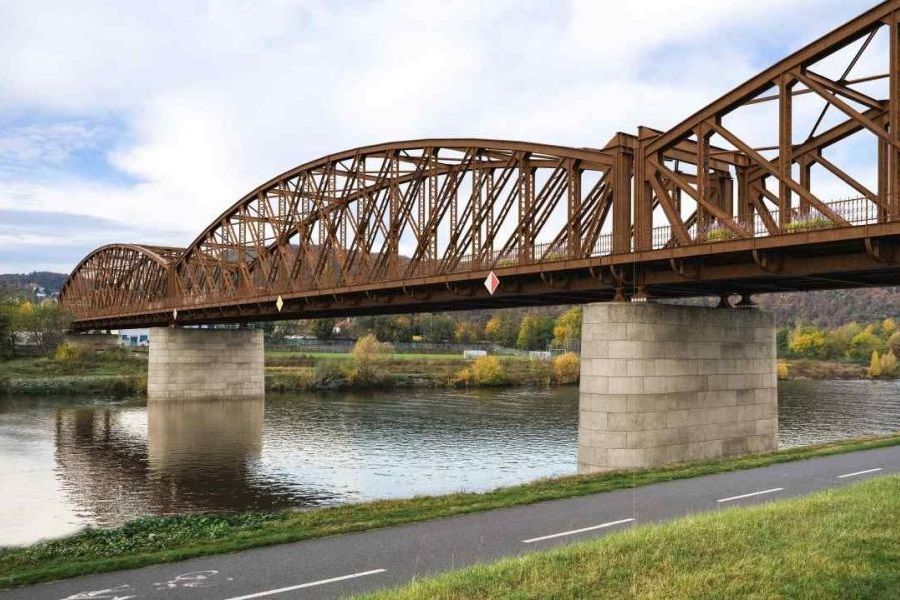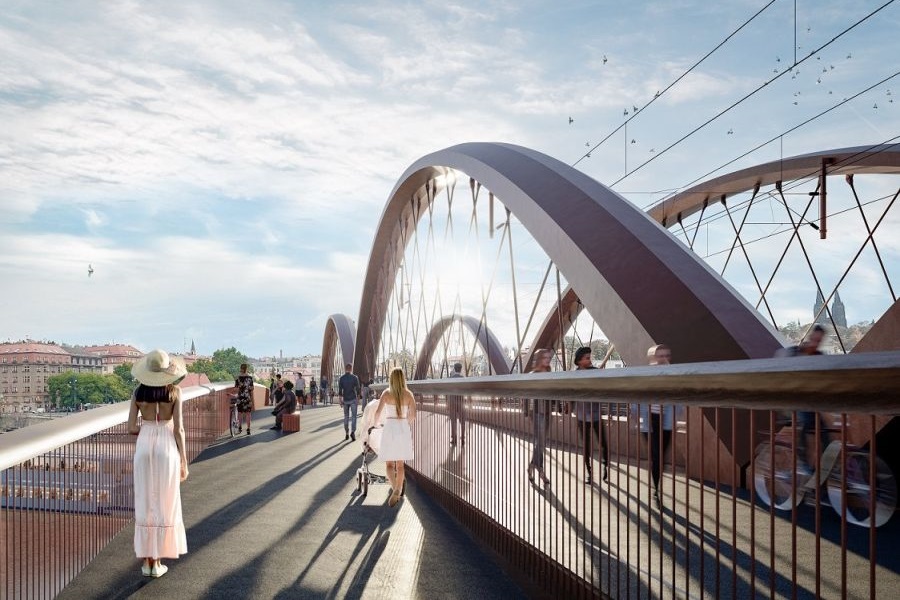On Monday, the Prague City Councilors voted to preserve and relocate the historic Výtoň Railway Bridge. The steel structure will be moved to the southern part of the capital and replaced by a new three-track railway bridge at the current location in Výtoň. The proposal also includes restoring and reinstating the bridge’s original Art Nouveau elements.
The current two-track steel arch bridge was built in 1901, replacing an original single-track structure from 1871. Both then and now, the construction of the new bridge faced public opposition. Over time, however, Praguers became accustomed to the arch bridge, and the once-unpopular structure was later protected as a monument. Prague has now decided to relocate the bridge to a new site to serve as a connection between Modřany and Chuchle for pedestrians and cyclists.
“The Výtoň Bridge is a valuable historical monument, intrinsically linked to Prague. If the railway authorities decide that the steel structure cannot be preserved at its current location, we are offering a solution to move this cultural heritage in a dignified manner and continue to use it in our city. The solution involves relocating the entire historic steel structure upstream to connect Velká Chuchle and Modřany, where it will serve as a pedestrian and cycle path. The iconic arches will create a striking landmark at their new location while connecting the two major cycle paths along the Vltava,” explained Zdeněk Hřib, Deputy Mayor of Prague responsible for transport.

The structure will be relocated 6.4 km upstream to Modřany, where it will function as a pedestrian and cycle path. At points where it passes under the Barrandov and Dvorecký Bridges, the structure will need to be partially submerged. It will then be cleaned and repaired on the left bank below the Modřany weir. The original Art Nouveau elements, which were removed due to electrification, will be reattached. The bridge will then be installed at the site currently occupied by the ferry, thus linking Chuchle and Modřany. The load on the bridge as a pedestrian and cycle path will be significantly lower than in railway operation, so the bridge, with its original construction elements preserved, can continue to serve for many decades in its new role.
“The existing bridge is over a hundred years old. Detailed inspections have shown that the bridge is no longer repairable for railway use. Two tracks are also insufficient to meet the growing demand for rail transport; they already represent a bottleneck in Prague’s rail network. For the development of urban and long-distance trains, a new bridge with a third track is absolutely necessary. However, we recognise the value of this historical heritage. We are pleased to give the old bridge new life through its relocation to a new site, and we have also managed to preserve the valuable historic piers under the original structure for the new bridge,” said Pavel Paidar, Director of the Railway Administration’s Construction Preparation Department.
Two locations were considered; one alternative was placing it in Lahovičky – Modřany. It was also examined whether it would be better to relocate the bridge as a whole or in parts. Relocating it as a whole proved to be a quicker and more cost-effective solution.
The costs for project preparation and subsequent implementation, including the relocation of the existing bridge structure, necessary renovation, and adaptation to the new purpose, including the construction of new piers, will be covered by the Railway Administration. The city of Prague will oversee the adaptation and construction of the adjacent access routes on both banks.

The new railway bridge below Vyšehrad will also feature steel arches and, notably, three tracks. The third track is a key element for the further development of the suburban rail network. With only two tracks, most of the planned trains would have to terminate at Smíchov.
However, the new bridge construction will not be as radically altered as at the start of the last century. The valuable and still functional stone piers will be preserved and supplemented with additional supports. The steel arches, which are nearing the end of their lifespan for rail operations, will be replaced with new construction. The long-closed bridge arches at Výtoň will be made accessible through the redesign of the surrounding area and used for a café or shop. The bridge reconstruction also includes revitalising the entire area around the Výtoň and Smíchov bridges. The new bridge will significantly improve the pedestrian and cycle path connection between both banks.
